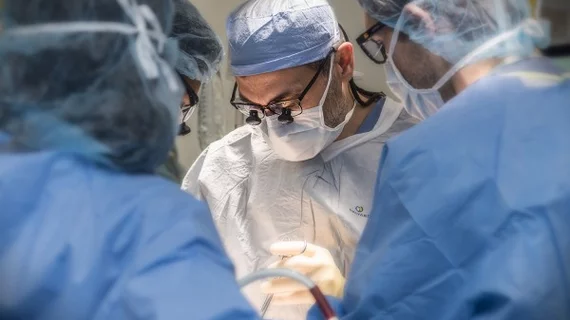Radial artery grafts vs. saphenous vein grafts for CABG: Does one outperform the other?
Radial artery (RA) grafts and saphenous vein (SV) grafts are associated with similar long-term mortality rates among patients who undergo coronary artery bypass grafting (CABG), according to new findings published in Circulation.[1] The analysis came after clinicians have been debating if the RA may actually be a better conduit than the SV.
“We showed that there was no difference in patient survival between RA and SV grafts and that the survival curves actually near perfectly overlapped,” co-author Faisal Bakaeen, MD, a cardiothoracic surgeon with Cleveland Clinic, said in statement on the hospital’s Consult QD website. “If your goal is to influence survival, using the RA is unlikely to affect it.”
Bakaeen and colleagues—including first author Steven Goldman, MD, a professor with the University of Arizona who specializes in CABG research—examined data from more than 700 patients who had previously participated in a large Department of Veterans Affairs (VA) study.
The median survival for patients receiving an RA graft was 14.2 years. The median survival for patients receiving an SV graft, meanwhile, was 14.6 years. The survival rates remained similar even after a variety of adjustments were made for demographic and clinical variables.
Bakaeen also provided some additional context on the team’s findings.
“Our VA study reflects real-world experience of multiple surgeons in multiple medical centers,” he said. “Theoretically, you could argue that relative lack of surgeon experience is why RA grafting was nonsuperior in the VA study. However, the study’s perioperative mortality and graft patency rates at one week and one year compare favorably with those of other studies. Graft patency at one year was 89% in both conduit groups. This is comparable to rates achieved by surgeons known for excellent CABG outcomes and is a testament to the skill of cardiac surgeons in the VA system.”
The full analysis can be read here. Additional co-authors involved in the study came from Stanford University and the University of Alabama.

